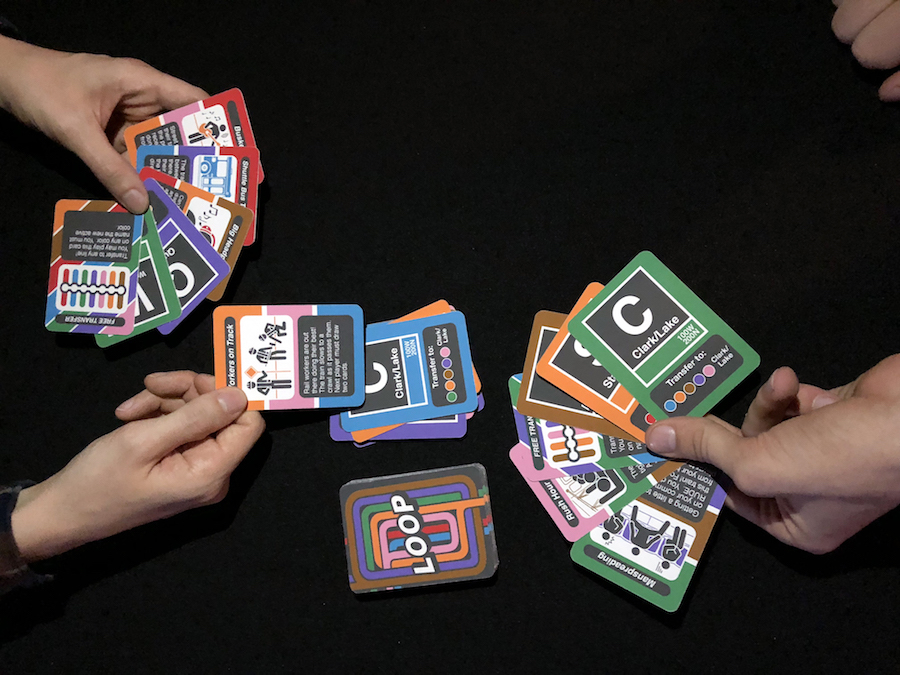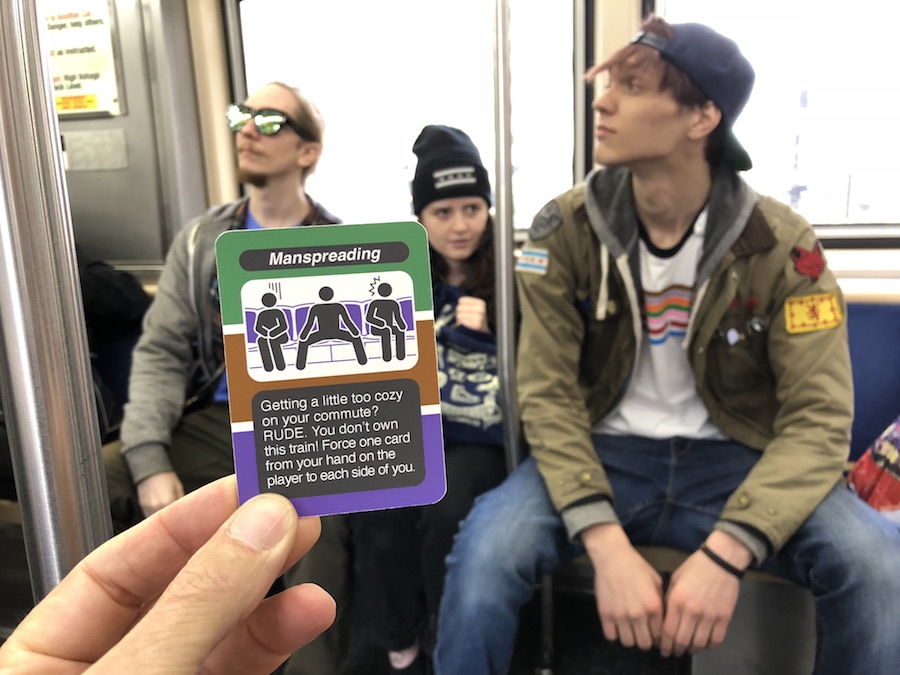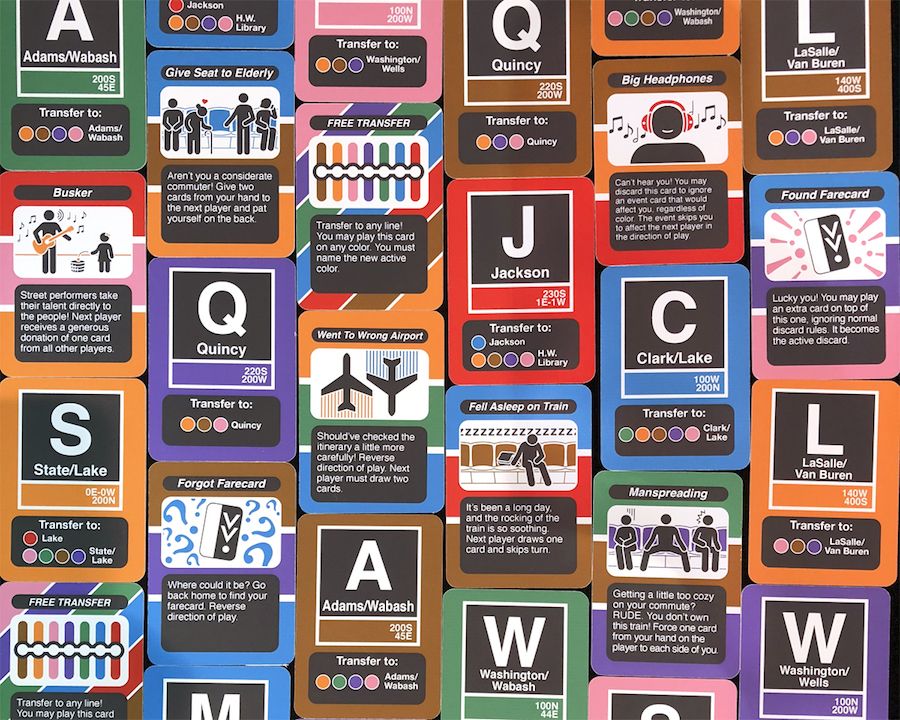While riding the CTA, have you ever:
A. Fallen asleep on the train after a long day?
B. Accidentally pressed the intercom button and started a conversation with the conductor?
C. Sat in a mysterious puddle of indeterminate origin?
Or maybe all of the above? I won't tell.
In its first foray into games, Transit Tees aims to capture the good, the bad, and the ugly of your daily commute with “Loop: The Elevated Card Game.” In it, you’ll journey through Chicago’s downtown via the L, navigating the city’s iconic train stations while dodging the hazards of public transportation that we know all too well, like rush hour crowds and rail construction.
Founded in 2001 by Tim Gillengerten, Transit Tees is a mainstay in the local art community. The boutique and design studio has produced hundreds of original posters, apparel, magnets, and home goods inspired by the CTA and the city of Chicago. This family-friendly card game, which was released yesterday, is available for $20, both online and at Transit Tees’s stores in Wicker Park and Andersonville.

Tom LaPlante, an art director at Transit Tees, is the brains behind the project, having spearheaded it throughout the whole year. “We didn't know we wanted to do a card game specifically, so we were thinking about board games, dice games, or other sorts of things,” he says. “But just looking at the map, it kind of occurred to me that with all the different colored lines and stations where you can transfer from line to line, it lent itself to a gameplay style kind of like Crazy Eights.”
Similar to games like Crazy Eights and Uno, you win by getting rid of all your cards before anyone else. However, to maneuver the “Loop,” your goal is to match color lines and station names instead of suits and numbers. For example, if the player before you discards the card for the Clark/Lake station on the Blue Line, you’d need to discard another Blue Line station card or “transfer” to one of the other lines at Clark/Lake, like the Green or Orange Line.
“Loop” is fairly easy to learn; you’ll likely get into the rhythm of the game after a few turns. It’s also fast-paced, typically lasting between 10 and 20 minutes, depending on the number of players (two to seven are recommended). One unintended side effect of playing: you become very familiar with all the transfers required to navigate downtown. With a couple of minor exceptions made to ease gameplay, the CTA stations are accurate to their real-life counterparts.
You can also throw a wrench into the game and play an event card, which introduces headaches that would derail, if you will, your regular commute. This card allows you to force a player to skip their turn or add cards to their hand; hilariously, the directive will mimic the nature of the event. Did you take the train to O’Hare instead of Midway? Reverse the direction of play. Is someone manspreading across two whole seats? Force one card from your hand to each of the players next to you.

Originally, LaPlante had considered including the entire CTA system, but he ended up narrowing the scope to the Loop due to concern over the number of stops he’d have to include. “By the time you multiply [the stops] by all the different stations or by all the different line colors, that's a very, very thick deck and it's kind of an unwieldy game,” he says.
Gillengerten says it's easy to take the CTA experience for granted. He recounts when his brother visited town and they rode the L downtown together. “I'm just checking my phone and he nudged me and said, ‘Tim, look around. All these people are just looking at their phones, reading the paper, doing a crossword puzzle. How could they be so calm? This is so exciting.’"
Chugging along after 125 years, the L is still a wonder to behold. For all its shortcomings, it remains the great equalizer of Chicago, carrying people from all backgrounds. And that's part of what makes “Loop: The Elevated Card Game” such a fun and novel diversion. It speaks to a shared Chicago experience, celebrating the train as a symbol of our pride in being a world-class city with working-class roots.





Comments are closed.